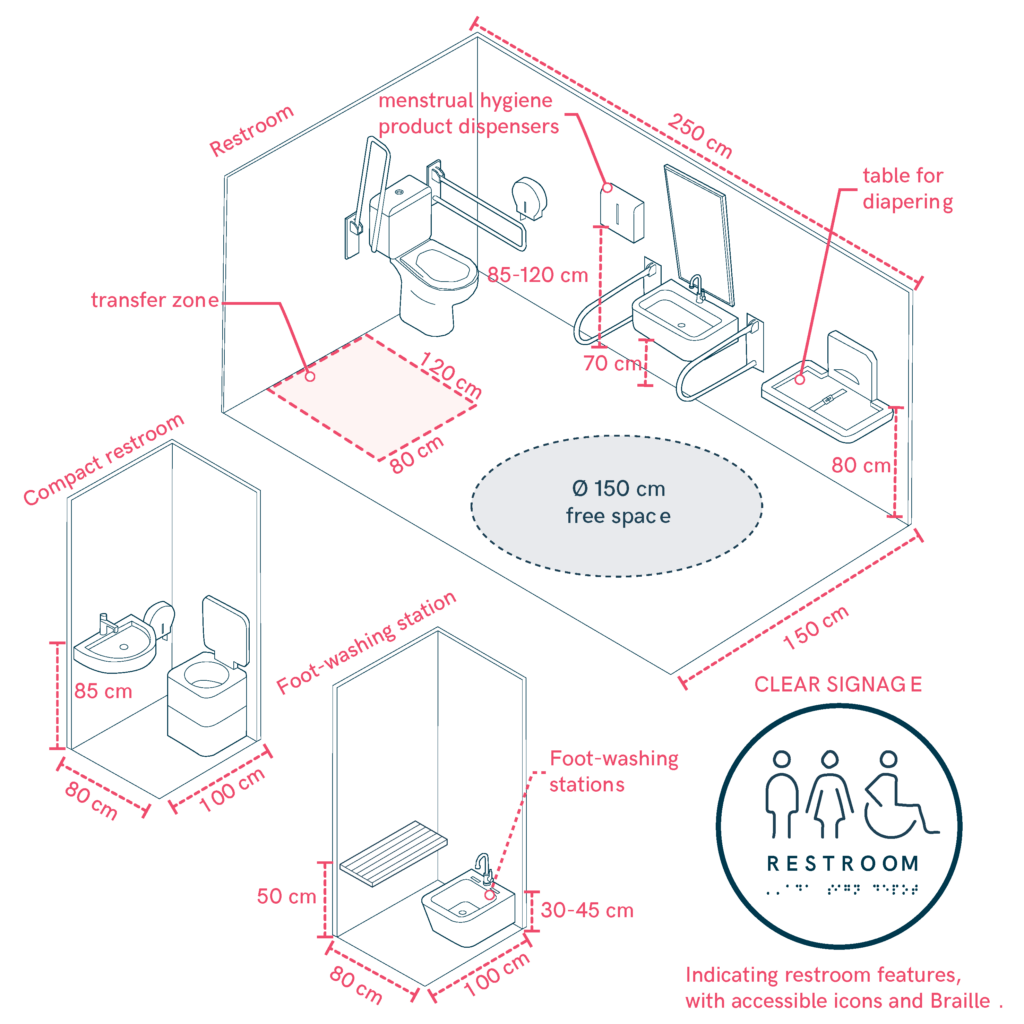Restroom Design Based on Specific Needs
Not all users require the same type of restroom, which is why offering a variety of specialized single-user restrooms is essential for true inclusivity. This can include stalls with sinks for menstrual hygiene, extra room for caregivers and children, or quiet, private areas for personal care routines. Prioritizing function over gender allows users to choose based on comfort and accessibility. Cultural and religious hygiene practices should also be accommodated. Clear signage and intuitive layouts help users easily find the space that best suits them.

- Restroom with sink and menstrual hygiene product dispensers. Sink height of 85 cm with 70 cm clearance underneath. Dispensers placed at an accessible height (85-120 cm).
- Restroom with changing station and extra space for caregivers with children. A minimum 1.5 m turning radius for strollers. A secure changing table for diapering.
- Restroom with a large mirror and proper lighting for personal care. Even lighting and mirrors at various heights for accessibility.
- Compact restroom for quick access to reduce waiting lines. Optimized dimensions for efficient use.
- Restrooms adapted for cultural practices. Foot-washing stations at 30-45 cm height for religious ablutions, bidet-equipped stalls, or enclosed areas for privacy-based hygiene practices.
- Clear signage indicating restroom features, with accessible icons and Braille.
Sources
- https://accessible-eu-centre.ec.europa.eu/content-corner/digital-library/en-172102021-accessibility-and-usability-built-environment-functional-requirements_en
- https://hcma.ca/wp-content/uploads/2018/01/HCMA_Designing-for-Inclusivity_V1-1.pdf
- https://universaldesign.ie/built-environment/building-for-everyone/building-for-everyone-full-series
